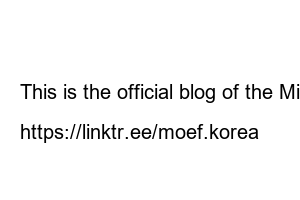예금자 보호법 해당없는 은행2020. 7. 29. 14:38
It’s not common for financial companies we use every day to go bankrupt, but it’s not unheard of.
In the case of the United States, nearly 279 banks have gone bankrupt since September 2008, when the financial crisis broke out. In Korea, as well, over 30 savings banks have gone bankrupt since 2011 amid the financial crisis and real estate recession.
If the financial company you are using goes bankrupt, what will happen to the money you deposited? Will it be airborne? Or how much can you be guaranteed?
Today, we will look at the Depositor Protection Act, which protects principal and interest within a certain limit even if a bank goes bankrupt.
Depositor Protection Act and Korea Deposit Insurance Corporation
Image source: Korea Deposit Insurance Corporation website
The Depositor Protection Act is a law that was created to protect depositors and maintain the stability of the financial system by efficiently operating the deposit insurance system to cope with situations where financial institutions are unable to pay deposits due to reasons such as bankruptcy. .
In accordance with this law, the Deposit Insurance Corporation was established to efficiently operate the deposit insurance system. In simple terms, the Deposit Insurance Corporation can be thought of as an insurance company that takes banks. Usually, insurance premiums are received from financial companies to accumulate funds, and when financial companies are unable to pay deposits due to reasons such as bankruptcy, the Korea Deposit Insurance Corporation pays for them.
In addition, since deposit insurance is a public insurance operated by law, even if funds are insufficient, the Korea Deposit Insurance Corporation directly issues deposit insurance fund bonds to raise funds.
Which financial institutions and financial products are eligible for depositor protection?
The Depositor Protection Act does not unconditionally protect all financial companies or financial products.
Financial institutions that provide deposit protection include banks, securities companies, insurance companies, comprehensive financial companies, and savings banks. Local agricultural and fishery cooperatives, credit unions, and Saemaul Geumgo are not subject to protection by the Korea Deposit Insurance Corporation, but are protected by their own funds in accordance with relevant laws. Post offices are also not subject to the Depositor Protection Act, but you can be fully guaranteed for postal deposits and insurance money under postal insurance contracts in accordance with the relevant laws.
In the case of a financial product with deposit protection, you can easily identify it by looking at whether or not the principal payment is guaranteed. Most of commercial banks’ common deposits, fixed deposits, foreign currency deposits, and money trusts in which the principal is preserved are products that guarantee the principal and can receive depositor protection. Most of the savings bank’s regular deposits, savings deposits, and term deposits are also protected financial products.
On the other hand, financial investment products such as certificates of deposit, repurchase agreements, beneficiary certificates, mutual funds, and deposits for spot trading in gold are not protected. In addition, the bank’s housing subscription savings and housing subscription comprehensive savings, which are common, are not protected products.
The most accurate way to check whether the financial product you subscribed to is subject to depositor protection is to check the website of the Korea Deposit Insurance Corporation.
What is the maximum amount that can be protected?
Deposit protection products do not guarantee full, unlimited deposit protection.
The maximum amount of protection is up to KRW 50 million per person and per financial institution. It is not the amount of protection for each type of deposit or branch, but the total amount that can be protected for one depositor within the same financial company. In addition, if you have deposits in other financial institutions, those deposits can also be protected up to KRW 50 million per person.
For example (assuming that there is no separate interest), if ‘A’ deposits 30 million won at the Yeouido branch of Bank A and 50 million won at the Apgujeong branch, the total guaranteed amount under the Depositor Protection Act is 50 million won. no see. Also, if ‘B’ deposits 60 million won in bank A and 40 million won in bank B, he or she can be guaranteed 50 million won in bank A and 40 million won in bank B, respectively.
Also, there is a mutual financial institution that can be confusing. Even if the name is the same, if the corporation is different, it corresponds to a different financial institution. For example (assuming that there is no interest), if ‘Byeong’ deposits 50 million won in Saemaul Geumgo A and 50 million won in another corporation, Saemaul Geumgo B, each of them can be protected under the Depositor Protection Act. .
It is important to note that the limit of KRW 50 million according to the Depositor Protection Act is the amount including interest, not the principal, and Koreans and foreigners can also receive depositor protection if they subscribe to a product subject to protection by a financial company in Korea.
This is the official blog of the Ministry of Strategy and Finance.
Talk with your friends and friends!
https://linktr.ee/moef.korea

